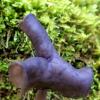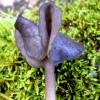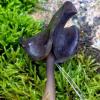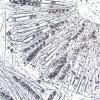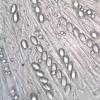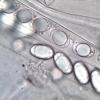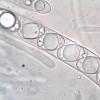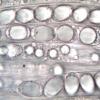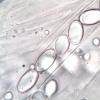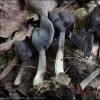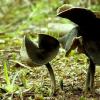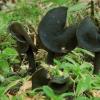
16-11-2025 21:09
 Robin Isaksson
Robin Isaksson
Anyone recognize this acc. to pictures.? Found on

14-11-2025 16:26
 Marian Jagers
Marian Jagers
Hello everyone, On dead wood of Cytisus scoparius

15-11-2025 23:22
Mario FilippaHello,this is what I think to be Hymenoscyphus mac

15-11-2025 20:25
 Riet van Oosten
Riet van Oosten
Hello, Found by Laurens van der Linde, Nov. 2025

14-11-2025 18:31
 Lothar Krieglsteiner
Lothar Krieglsteiner
Hello,can somebody provide me with a file of:Rothe

12-11-2025 09:25
 Viktorie Halasu
Viktorie Halasu
Hello, I need help with a pale terrestric Pseudom

11-11-2025 20:16
Bohan JiaHi, lastly I have found these tiny yellow decayin

09-11-2025 13:20
Hello.A tiny ascomycete, appearing as erupting gra
Again with a specimen of Helvella, which I believe as much in common with Helvella atra, mainly the stem. The cap however is a bit distinct from what I'm used to observe, not only because of the three saddles, but also because of the colour and texture. Is there any other species with these features?
Thanks in advance,
zaca
(17.9) 18.6 - 21.07 (21.1) × (11.1) 11.2 - 13.6 (13.7) µm
Q = (1.5) 1.52 - 1.7 ; N = 20
Me = 19.8 × 12.3 µm ; Qe = 1.6

try any key to this genus, for example: https://www.ncbi.nlm.nih.gov/pmc/articles/PMC5832953/
Regards,
Marek
thanks for your suggestion and link.
However, I have a problem while trying to appy the key, as follows:
I think that is easy to reach the point 54 of the key; For clearliness I repeat the steps below. After that there are only a few taxa remaining:
H. bicolor, H. fistulosa, H. levis, H. monachella,
none of which can be selected as direct application of the key, in my opinion. The one which "seems" closer (looking at photos available in the internet) is H. monachella, but the spores of are much bigger than those of my specimen. So, what to do?
Can anyone help?
Thanks, zaca
Evolution in the key:
1. Apothecium with a ± prominent distinct stipe. . . . . . . . . . . . . . . . . . . . . . . . 2
2. Stipe terete, even, internally solid or hollow, occasionally with
grooves at base and/or apex, tissues well differentiated. . . . . . . . . . . . . . . . . . 30
30. Apothecium convex, bi- to trilobate saddle-shaped, or irregularly lobed. . . . 43
43. Cap saddle-shaped or irregularly lobed with a ± deflexed margin. . . . . . . . . 50
50. Receptacle surface glabrous. . . . . . . . . . . . . . . . . . . . . . . . . . . . . . . . . . . 54

Regards,
zaca
for giving me your opinion.
Looking back to the starting point, from the title of the topic, that was my understanding, but then I decided to question to get more confidence and this now happen.
Regards from Portugal,
zaca
for increasing the percentage level of confidence. That's always nice to hearing from you and seeing some of your inexhaustible stock of beautiful photos.
Kind regards,
zaca
P.S.: Maybe, I became confused by the trilobed cap.
Quote:
"Apothecia stipitate-capitate, saddle-shaped or irregularly lobed,
1–4 cm broad, 3–12 cm high, cap margin adnate and attached
to stipe at 3–4 points; hymenium and stipe blackish with a dark
violet brown tinge (10-12F-H7-8), even or wrinkled; receptacle
surface greyish brown to black, smooth, with inconspicuous
ribs on outer surface; stipe 0.5–2.5 cm broad, naked, with 4–7
sharp-edged, partly double-edged ribs, attached at 3–4 points
to the reflexed apothecial margin greyish brown to black, paler
towards base, ribs prominent, sharp, partly anastomosing and
double-edged, with 'holes' (lacunae) between ribs, stipe chambered
inside. "
Mirek
